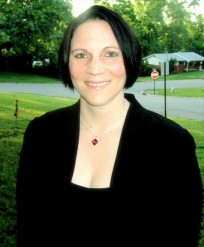Fifty-four percent of Arkansas students will graduate with an average debt of $21,000, according to the latest figures available through the California-based Institute for College Access and Success (TICAS).
Although most education advocates agree that scholarship funding goes a long way towards mitigating debt, non-traditional students in particular fail to realize just how much financial aid is available to offset the growing cost of higher education.
Cynda Alexander is the non-traditional student programs coordinator at the University of Arkansas at Little Rock. She says many adult learners simply don’t know how to address the challenge of finding free money for school, or they assume it is not available for them.
“It can be daunting,” Alexander said. “But the money is out there if the student is willing to put in the effort.”
 That was the case for 42-year-old Wendy Lyons, a triple major in small business management, accounting, and professional and technical writing.
That was the case for 42-year-old Wendy Lyons, a triple major in small business management, accounting, and professional and technical writing.
So far, Lyons has applied for, and been awarded, upwards of $6,500–enough to cover the cost of full-time tuition and fees at the university this fall.
Lyons spent several months sifting through a variety of scholarship applications after she attended an on-campus workshop offered by the UALR Office of Campus Life specifically geared toward non-traditional students.
The workshop is presented by Alexander, as well as Alumni Membership Coordinator Derek Boyce and Private Scholarship Coordinator Stephanie Conrad.
“I was flying blind,” admitted Lyons. “I never understood how financial aid worked or much of anything about scholarships, so I was going by the seat of my pants for a while.”
To help make the process less formidable, Alexander said much of the legwork is done for the students ahead of time, including supplying a spreadsheet that lists about 70-80 awards specifically for the non-traditional student.
Alexander also invited representatives of various scholarship foundations to give the 75 workshop attendees an idea of what is available for non-traditionals, if they only asked.
Lyons spent hours each day applying for any scholarship for which she fit the criteria. She applied for close to 30 scholarships, many of them from private sources outside of UALR.
Lyons first found success with a scholarship from the UALR Alumni Association that paid for all her textbooks, saving her hundreds of dollars.
But the real shocker, she said, was a $2,500 AT&T War Memorial Scholarship, awarded annually to a veteran of any branch of the military planning to enroll in an accredited two- or four-year college or university in Arkansas.
Because she assumed the competition would be fierce, Lyons did not think she stood much of a chance after submitting her 500-word essay for the scholarship. Only four veterans applied. In another instance, a local scholarship deadline was extended because Lyons was the only student to apply at the time.
The lack of scholarship applicants is not unusual, according to Alexander, who said only 30 percent of available funding is distributed because of low applicant numbers. It is indicative of the challenge educators face in recruiting students who believe the only way through school is substantial debt, she said.
“What these non-traditional students need to understand is that people want to give money to this applicant pool because they are generally such a great investment,” Alexander said.
“They want to know that the student will be able to pay it forward. And these students almost always will.”
Lyons was fortunate. The supervisor at the small firm where she works not only suggested she return to school–all her courses so far have been online–he has provided financial assistance to help her do so.
Now Lyons is able to return the favor as she finds money in many unusual places to help pave her own way. As she awaits word on the last few scholarships she has applied for, she says even if she receives nothing more the process has been worth the effort.
Lyons said perhaps the scholarship committee members appreciated her opening hook in the essay she used for most of her applications, which reads: “When I was 18, I was an idiot, and college would’ve been wasted on me.”
“People need to see that the scholarships are out there, it just takes a little time and dedication to apply,” Lyons said. “I owe Ms. Alexander a lot. The seminar she led was very productive, obviously, but you just have to be willing to go after it.”